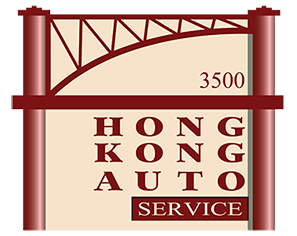Timing belt replacement can save you hundreds of dollars
[youtube=http://www.youtube.com/watch?v=JmtiYheNBWc&w=420&h=315]
For many of us, replacing our vehicle’s timing belt isn’t a top-of-mind activity. But knowing when this critical engine part needs to be replaced can save you hundreds of dollars and a sudden, aggravating breakdown. Here’s why…
When it comes to timing belts, it’s all in the name. The timing belt keeps your car’s valves, pistons, camshafts and crankshaft all rotating in sync. This belt controls when the camshaft(s) opens and closes the intake and exhaust valves, and it controls the crankshaft, which moves the pistons up and down inside the engine cylinders.
Over time and miles, timing belts become worn and they need to be replaced as part of your vehicle’s preventive maintenance schedule. This is not something you want to gamble with.
There are few, if any, warning signs before a timing belt snaps, and if it does, your car will stall immediately and come to a stop wherever you happen to be. This means a call to a tow truck and an unexpected repair bill—and this is the best-case scenario.
Worst case: Your engine pistons and valves collide, leaving you with internal engine damage, anything from bent valves to a broken piston. In some cases, the valves can snap and damage the cylinder head as well. Often, the full extent of the damage isn’t even known until your technician disassembles the top part of the engine, removing the valve cover(s) and sometimes the cylinder head. This spells a repair that can easily hit the $2,000 and up range.
So when do you replace your timing belt? Manufacturers typically recommend a new timing belt at 90,000 or 105,000 miles. Your owner’s manual will tell you what is recommended for your vehicle. If you’re not sure, ask us and we’ll be happy to help provide the information.
It’s also important to note that, unlike serpentine or accessory belts, timing belts are nearly impossible to visually inspect. They do not show signs of cracking and wearing the same way accessory belts do, and they’re usually buried under a number of plastic engine shields and other components. The best insurance is to replace the timing belt according to your vehicle’s factory-recommended maintenance schedule.
When replacing your timing belt, it’s also smart money to replace the water pump at the same time. A water pump’s normal life span may not be much more than 100,000 miles, and the water pump is usually located behind or beside the timing belt. In those cases, it doesn’t cost that much more to replace the water pump when you’re already removing all the components required to access and replace the timing belt. If you replace the timing belt at 90,000 miles, you do not want to essentially do the same repair again in 10k or 20k – this time to replace the water pump. It’s much easier on the wallet to do both at once. The same is true for the timing belt tensioner – it should be inspected for wear and replaced if needed.
Can you hear the dollar signs adding up as you read this? Even though replacing the timing belt at the specified mileage typically costs several hundred dollars, it pales in comparison to the expense and inconvenience of a broken timing belt. Do yourself a favor and plan ahead for this maintenance requirement. And if you have questions or need to buy some time, talk to us. We’re here to help! Schedule an appointment now.
